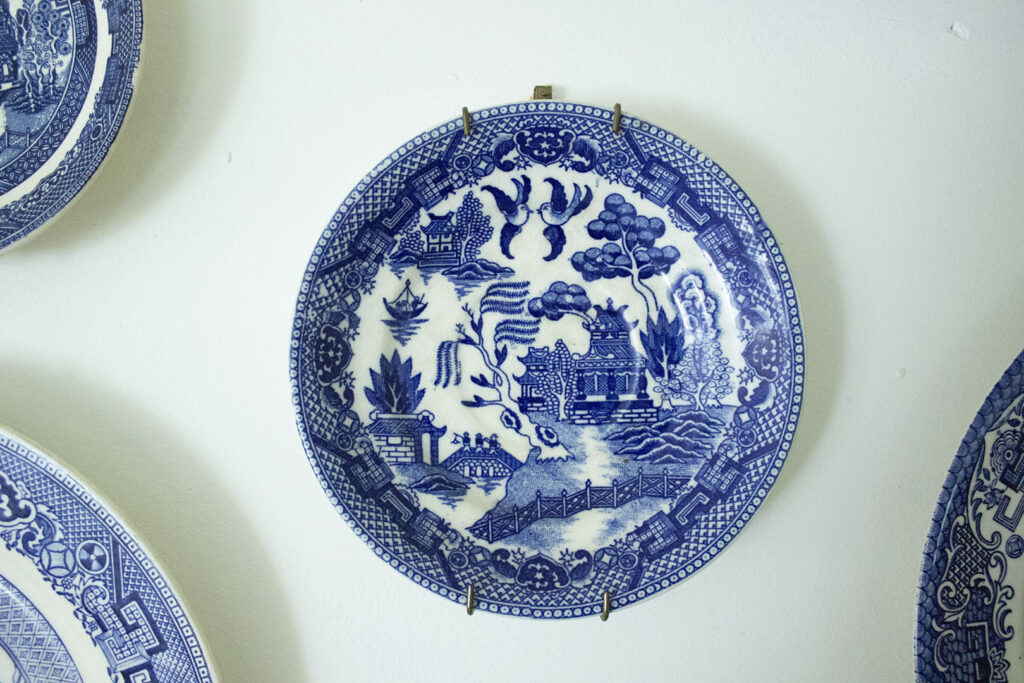
I fell in love with Blue Willow China at a young age. When I was a kid, my mom’s fine China set that we used for holidays was Blue Willow. I loved the color and the beautiful scenery that was depicted in each piece.
As an adult, I inherited some of that special Blue Willow set that my mom once owned. An avid thrifter, I grew my collection by shopping places like Goodwill, my local thrift store, and antique stores.
Today, I have dinner plates, salad plates, bowls, teacups, and saucers that I use when I have company. I also have a collection of mismatched Blue Willow plates on display on my wall. It is my biggest and most loved collection in my home. I hope I can pass this love onto my daughter someday.
Blue Willow China has been popular for many years. It actually has a unique legend behind the design of the pattern. Read on as we discuss Blue Willow China – what it is, it’s history, the legend behind it, how to care for it, and how to amass your very own collection.
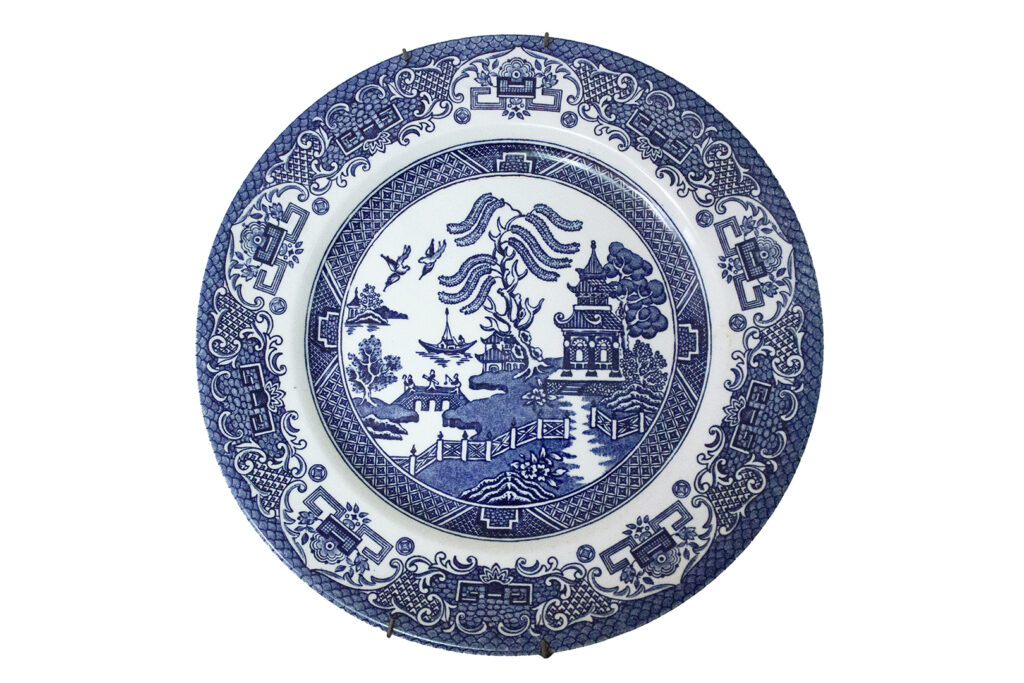
Blue Willow China is a classic blue and white China pattern that is popular with collectors. The scene depicted in each piece is always the same: two doves flying above a calm outdoor scene, with visible houses, boats, and trees. Blue Willow China is considered chinoiserie design. Chinoiserie means that a pattern is inspired by Chinese culture, but it was created for a European buyer.
Despite the Chinese scenery, this pattern is European – English specifically. Thomas Turner of Caughley, Shropshire, England created the pattern in 1779. The original willow pattern was engraved by Thomas Minton. The pattern was designed after a Chinese blue and white landscape pattern known as Nanking.
The legend behind the story was a marketing tactic designed by Turner. By the end of the 18th century, this pattern was well-loved in Europe. There were multiple makers crafting China in the Blue Willow pattern. Today, the pattern has been around for over 200 years, and it has been produced by over 500 different manufacturers.
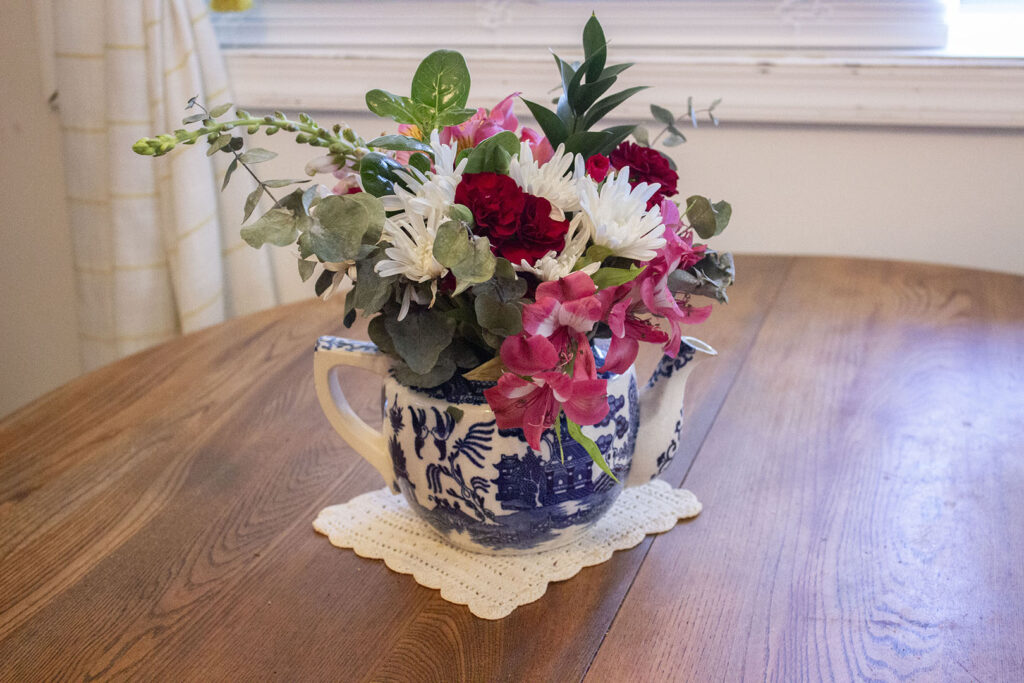
The consistently depicted scene in the Blue Willow China pattern tells a story of forbidden love. According to legend, there was a rich merchant by the name of Tso Ling with a lovely daughter, Kwang-se. The two lived together in a pagoda, which sat under a pine tree and next to a bridge. The daughter had been promised in marriage to another wealthy merchant. But alas, she had fallen in love with Chang, the handsome but poor clerk of her father’s.
When Tso Ling discovered this hidden relationship, he became angry. As a result, he kept his daughter locked up to prevent them from being together. However, the two lovers eloped across the sea. They were pursued by Tso Ling in a boat, and were about to be killed. The gods protected them by turning the lovers into turtle doves. These two birds can be seen on every piece of Blue Willow.

I personally have collected a large amount of antique, vintage, and newer Blue Willow pieces at thrift and antique stores. Blue Willow is still produced today, so not every piece is antique. Its ready availability means that you can start a collection without spending too much. Just opt for the more common and less valuable pieces.
The good thing about Blue Willow is that the bright blue and white pattern makes it easy to see on a store shelf. Once you start keeping an eye out for it, you’ll be able to spot it! If you want to create a more affordable collection, stick to thrift stores. Just know that you may have to shop often to find the best Blue Willow pieces. I once scored a huge collection of Blue Willow for just $20 at a thrift store. I had to move quickly, because I wasn’t the only one eyeing it.
If you want to collect antique and rare Blue Willow pieces, try antique stores and online auctions. You may have to spend more, but it might be easier to find pieces you are looking for. You can find Blue Willow in a variety of shapes, sizes, and price points if you search for Blue Willow on Etsy.
Newer Blue Willow pieces are dishwasher safe! I place all my newer pieces in the dishwasher for cleaning. For antique and vintage finds, hand wash them carefully with dish soap and a soft towel.
Display your pieces carefully and keep them clean and dust free! If you have children, like I do, opt for a locked curio cabinet to display your treasures safely. The good thing about a curio is that is also prevent dust from collecting.
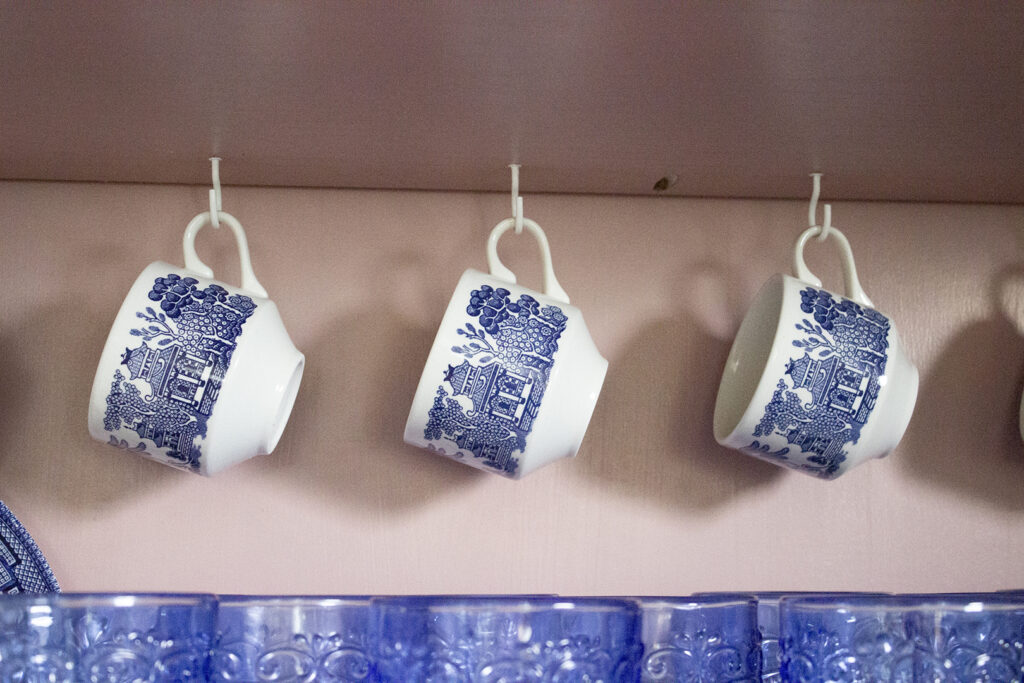
I have a pink hutch in my kitchen where I display my Blue Willow teacups. They hang on little cup hooks attached to the underside of one of the shelves. I also have a collection of Blue Willow plates hanging on the wall above my kitchen cabinets. If you don’t have children and pets, you can display on open shelving if you feel comfortable doing so.
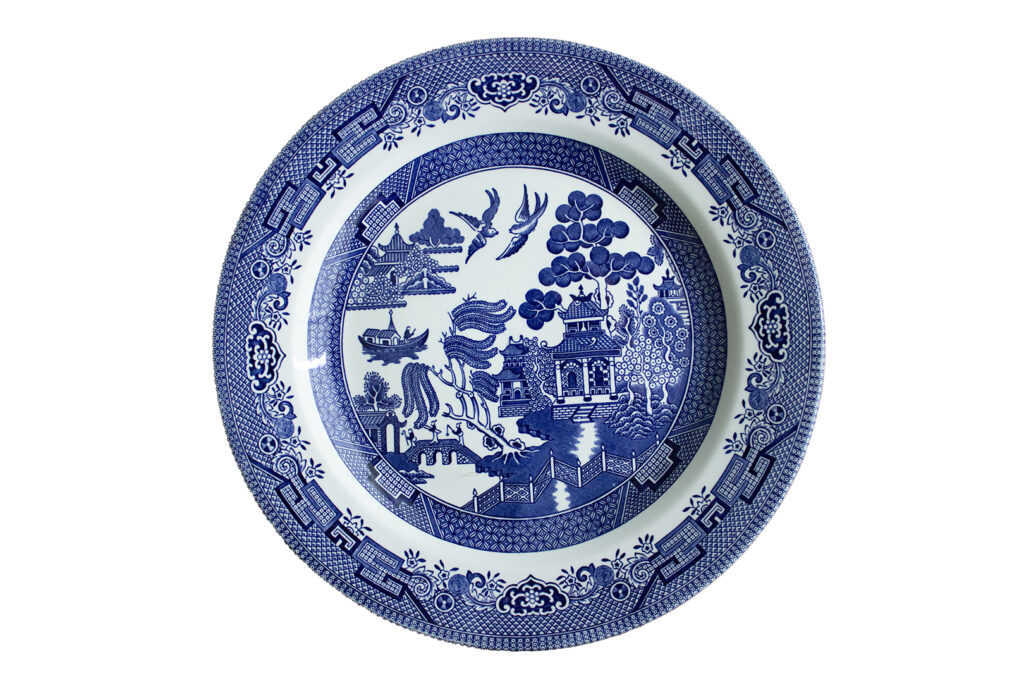
As mentioned before, Blue Willow ranges in value from expensive and rare antique pieces to common, affordable newer pieces. The value depends on the age, the makers mark, and the type of piece in question.
Check out Worthpoint to determine value of your pieces. You can get a general idea of value by searching online to see what pieces are selling for. Look on eBay, Etsy, and Replacements for sale prices. However, the best way to determine accurate value is the have a piece appraised by a professional.
https://thebrooklynteacup.com/blogs/blog/blue-willow-china-pattern
https://rarebirdantiques.com/history-of-blue-willow-china
